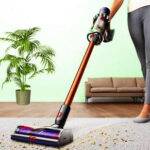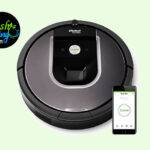An air purifier removes impurities from the air we breathe. These impurities include dust mites, hair, pet dander, bacteria, viruses, pollen, spores, smoke, particulate matter (PM), volatile organic compounds (VOC) and bad odors. Different air purifiers use different technologies like high-efficiency filters, ionizers and UV light to eliminate airborne pollutants.

In this article we are going to talk about how to select a good air purifier. For this, we are first going to walk you through the fundamentals of air purification. Then, once we are done with the basics, we will talk about the top five things you need to consider while choosing an air purifier. Let’s get started.
Table of Contents
How does an air purifier purify air ?
An air purifier takes in dirty air and passes it through a series of filters which trap and remove the airborne pollutants. The clean air is released back into the indoor air while the dirt-clogged filter(s) need to be either washed or replaced from time to time. Let us take a look at the common air purification techniques. To read more detailed analysis on air purification technologies, read our detailed write up on the topic. A small snippet is provided below.

HEPA technology
HEPA stands for High-Efficiency Particulate Arrestant or High-Efficiency Particulate Arresting. It is the most sophisticated technology used in air purification. A HEPA filter comprises of a bed of randomly arranged ultra-fine fiberglass fibers with diameters ranging from 0.5 to 2.0 micrometer (micron). It is the most powerful filter capable of intercepting up to 99.97% pollutants of size 0.3 micron and larger. It eliminates PM 2.5, PM 10, bacteria, viruses, spores, pollen, dust mites and pet dander. It is suitable for asthmatics and people with allergies. HEPA filters, however, cannot remove odors.
Activated Carbon technology
This method involves a layer of activated carbon which acts as a filter. Activated carbon is highly porous and has an enlarged surface area which attracts passing gaseous molecules and takes them out of the air stream. It is very effective against bad odors, cooking smells and VOCs like formaldehyde, ammonia and benzene. Activated Carbon is beneficial for people with Multiple Chemical Sensitivity (MCS).
Ultra Violet Light technology
In this technique, the incoming air is made to pass through a lamp emitting UV light. UV light is known to be damaging to DNA. It disrupts the genetic code of microorganisms like bacteria, viruses, fungal spores and pollen. When polluted air makes its way through a UV lamp, the allergens present in it are permanently neutralized. They are either burnt or rendered harmless due to their altered DNA composition which prevents them from multiplying.
Ionization technology
An ion generator or ionizer produces a cloud of electrically charged air molecules which attract pollutants of the opposite charge. The positive and negative particles cling to each other, and becoming too heavy to remain airborne, settle to the ground and on other surfaces around the room from where they can be removed through cleaning. Ionization is effectual in curbing the spread of bacteria like salmonella and other air-mediated contagious diseases.
Photo Catalytic Oxidation
Some air purifiers kill germs through a process known as photo catalytic oxidation (PCO). In this method, a beam of UV light is shone on a thin film of titanium dioxide. This releases loose electrons which then react with atmospheric moisture, breaking up water vapor (H2O) into a hydrogen atom and a highly unstable hydroxyl (HO·) radical. This hydroxyl radical in turn reacts with organic allergens like spores and break them up into smaller harmless molecules like water and carbon dioxide.
Ozone technology
Ozone is used by commercial air purifiers to kill bacteria, viruses and spores. However, ground-level ozone is harmful for humans. Therefore, ozone generators are used in industrial facilities that do not require human presence. They are used in restoration and repair activities like removing smoke odors after a fire and musty smells after a flood or hurricane. Ozone is also a good sterilizer. It is used in hospitals to sterilize highly sensitive areas.
These are some of the techniques used in air purification. Most air purifiers use more than one technique to clean the air more holistically. Let us now proceed to the main section of our article, the buying guide.
Air Purifier Buying Guide
Here are the top 5 things you need to consider before putting your money down on an air purifier.
- What do you want the air purifier to do ?
- What should be the capacity of the purifier ?
- What features would you like in the purifier ?
- What is the operating cost of the purifier ?
- Where are you going to place the purifier ?
The first question you need to ask yourself is what do you need the air purifier for ?
What do you want it to do ? Do you want it to remove smoke? Do you want it to reduce pet dander ? Do you want it so your allergies will stay under control ? The air in your house may contain various kinds of impurities. Your choice for an air purifier must be guided by the air quality in your house.
For instance, if you live in a high-pollution area like a busy street or near a factory, you need a purifier that can remove dust, smoke, particulate matter, aerosols and VOCs. The best air purifier that can combat these pollutants is one that uses a true HEPA filter. HEPA air purifiers are the only air purifiers that can remove ultra-fine allergens such as PM 10, PM 2.5 and even smaller particulate matter.
If you or anyone in your family has asthma or other respiratory disorders, you need a HEPA air purifier. People with MCS or allergies will also be more comfortable with HEPA technology. If you have pets, you need to get yourself a purifier with a pre-filter and a HEPA filter. The pre filter removes large impurities like pet dander, hair and dead skin flakes. It makes it easier for the HEPA filter to concentrate on the smaller impurities like bacteria, viruses and dust mites. In other words, we can say that no matter where you live or what your air quality, a HEPA air purifier can root out a majority of the pollutants and make your indoor air more breathable.
If you are looking for a gadget that can fight bad odors, you should go for a purifier with an activated carbon filter. Activated carbon is the best weapon against foul smells and gaseous impurities like aerosols and VOCs. VOCs are released by household cleaning supplies, paints, glues, deodorants, room fresheners, plastic bags and plywood cabinetry. They cause sneezing, coughing, headaches and respiratory ailments. So if your indoor air has a high concentration of VOCs, you should opt for a carbon cum HEPA filter purifier.
If you want to sterilize your living quarters, you should consider UV light treatment. UV light decimates germs and is your protective shield against disease-causing microbes. You can also opt for purifiers with photo catalytic oxidation (PCO) technology. They are highly effective against carbon-based contaminants like spores. Additionally, there are purifiers that include an extra anti-bacterial filter to eliminate pathogens more comprehensively. You can check some of those out if you have a zero tolerance policy for germs.
If your house air is dry and need humidification, you can go for a 2-in-1 air purifier cum humidifier. It will remove impurities and infuse the air with moisture to reduce dryness. Check for the capacity of the water tank. A 500 ml tank is decent. Any smaller than that and you will frequently have to refill it.
What should be the capacity of your purifier ?
Brands indicate the capacity of their air purifiers through terms like ACH and CADR. ACH stands for Air Change per Hour. It means the number of times the air purifier can completely replace the room’s air with fresh air in an hour. Ideally, an ACH of 4 is good enough for urban homes. It means the purifier filters all the air in a room every 15 minutes. A purifier with an ACH of 5 does the same in 12 minutes. So the higher the ACH, the faster the gadget removes pollutants and the safer your indoor air.
Another term is CADR. CADR is an acronym for Clean Air Delivery Rate. It indicates how much air the purifier can purify in how much time for different categories of pollutants like dust, smoke and pollen. It is denoted in cubic feet per minute or cubic meter per hour.
Air purifiers also carry the coverage area in their description. It means the area they can effectively clean. Our suggestion would be to go for a purifier that has a higher coverage than the room you are planning to install it in. The coverage area of the device must be at least 20% larger than the room. This will ensure every corner of the room is cleaned and no space is left out.
Important note : Most brands refrain from mentioning the ACH because it is normally below the desired limit of 4. Most purifiers have ACHs of 2, 3 or somewhere in between. Therefore, it is crucial to calculate the actual ACH before selecting a model. For this, you first need to figure out the volume of your room by multiplying the length, breadth and height. Then you need to divide this figure by the CADR. Note that both figures must have the same unit. If you have calculated the volume of the room in cubic feet, the CADR must also be in cubic feet per minute. If the volume is in cubic meters, the CADR must be in cubic meters per hour. Once you have done this calculation (it’s pretty simple), you will have a clearer idea of how effective the purifier is going to be. Do not fall for sales gimmicks like discounts and seasonal sales. In the end, the air you breathe will have to be safe and free of germs, and for that you need a scientific approach.
What features would you like in the purifier ?
Brands today offer a host of features to make their product stand out from the rest. But not all of these features might be of use to you. Our suggestion would be to study the features carefully because you don’t want to be paying for something you won’t be using. Here are some of the most common features seen in air purifiers.
Pre-filter
A pre-filter, as discussed already, captures coarse impurities like hair and pet dander. It reduces the burden of the HEPA filter and prolongs its life. Pre-filters are easy to wash and maintain. They can be reused multiple times too.
Touch-sensitive control panel
Some gadgets have buttons and knobs while more expensive varieties have touch-sensitive control panels with LED displays. Choose a model that suits your budget.
Fan speed
The speed of the fan is adjustable in most purifiers. The higher the speed, the faster the filtration rate (and more the noise). We would advise you to go for a product with adjustable speed so you can change the filtration rate as per the air quality in the room.
Timer
A timer allows you to prefix the operating period of the purifier. You can set it for 2, 4, 6, 8 or more hours. After the set time elapses, the gadget automatically shuts down. A timer is a power-saving feature and therefore eco-friendly.
Filter replacement indicator
HEPA filters become saturated with grime as time passes. They need to be replaced with new ones to keep up the performance of the purifier. However, it is difficult to judge when to replace the filter. To solve this problem, air purifiers have onboard filter replacement indicators which alert the user when a change is due.
Live AQI meter
Some air purifiers come with in-unit AQI meters that measure the indoor air quality continuously. They reveal the real time concentrations of leading pollutants like PM 2.5, PM 10 and VOCs. This can help you keep a closer check on the house air quality and maintain a safe AQI level.
Remote controller
Almost all air purifiers come with remote controllers. They enhance the usability of the purifier and simplify monitoring.
Child Lock
This feature is instrumental for families with small children. It prevents kids from meddling with the functions of the purifier and keeps it safe.
Wi-Fi, Bluetooth, app and voice control
Some high-end gadgets have Wi-Fi and Bluetooth. They can be controlled remotely via app. You can set the timer, check the AQI, change the fan speed, and control just about any function through the app. You can also check the AQI of different cities around the world and receive suggestions on how to keep your indoor air clean. Some purifiers are Alexa-friendly and can be controlled through select Alexa devices.
Handle and casters
Some air purifiers have built-in handles to move them from one place to another. Some also have casters (wheels) for added mobility.
Night mode
Some air purifiers have advanced sensors that respond to light. As soon as you turn off the lights in the room, the purifier dims its own illumination and lowers the fan speed to create a peaceful environment conducive to sleep.
Special cleaning modes
Some air purifiers have special pre-installed cleaning modes. These modes are designed to handle specific categories of allergens. Examples are Bacteria and Virus mode, High-Pollution mode, etc.
Humidifier
A humidifier can be an asset for those who live in places that have a dry weather. A humidifier moistens your house air and keeps your skin supple and moisturized.
What is the operating cost of the purifier ?
This is a mandatory question you need to ask yourself before you lock in on a product. Your budget must be able to cover the running cost of the gadget. For the most part, the running cost of a purifier comprises of the cost of the filters. If the purifier has multiple filters like pre, HEPA, carbon, etc, they will have to be replaced at different intervals. If the purifier has a single composite filter, you may need to change it only once. So do check the frequency of change recommended by the manufacturer and also the cost of the filters.
Beware! A product may cost less initially, but in the long run may turn out to be expensive due to unreasonably high (and often hidden) maintenance costs. Purifiers that do not involve filters are cheaper to maintain. But HEPA purifiers are the most effective air purifiers there are. So the call is yours.
Where are you going to place the purifier ?
Placement is an important factor that requires consideration before you go in for a purchase. If you are planning to install the gadget in your bedroom, you need to make sure it is not very loud. It must have whisper-quiet operation and come with a special Sleep/Night mode for bed time function. If you want the device to be portable so you can move it around from room to room, look for purifiers with casters and handles. If you want to purify the entire house air, you need a gadget that will connect with your existing HVAC (Heating, ventilation and air conditioning) system and work seamlessly with it.
Conclusion
We hope we have been able to throw light on some of the key aspects of home air purification. This buying guide has been designed to help you to choose the right air purifier that best suits your needs.
Pro Tips : A cost effective option for natural air purification is bamboo charcoal bags. Read about them here.
Know what kind of air filters are used in a purifier before you buy a product.


